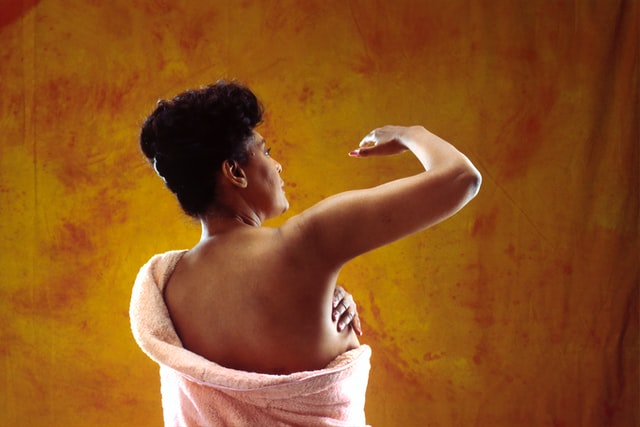
Psoriasis Awareness
PSORIASIS. MORE THAN SKIN DEEP.
What causes psoriasis?

Over 8 million Americans have psoriasis; nearly a third of whom will develop psoriatic arthritis. Psoriasis is an immune-mediated disease (a disease with an unclear cause that is characterized by inflammation resulting from dysfunction of the immune system) that leads to inflammation in the body. There may be visible signs of such inflammation, such as raised plaques (plaques may look different for different skin types) and scales on the skin.
Such signs signal an overactive immune system that accelerates skin cell growth. Normal skin cells completely grow and shed in a month. With psoriasis, skin cells shed in just three or four days. Instead of shedding, the skin cells pile up on the surface of the skin. Some people report that psoriasis plaques itch, burn and sting. Plaques and scales may appear on any part of the body, although they are commonly found on the elbows, knees, and scalp.
Psoriasis’ impact on other health issues.
Inflammation caused by psoriasis can impact other organs and tissues in the body. People with psoriasis may also experience other health conditions. One in three people with psoriasis may also develop psoriatic arthritis. Signs of PsA include swelling, stiffness and pain in the joints and areas surrounding the joints. PsA often goes undiagnosed, particularly in its milder forms. However, it’s important to treat PsA early on to help avoid permanent joint damage.

Symptoms often start between ages 15 and 25, but can start at any age. Men, women, and children of all skin colors can get psoriasis.
Though there is no known cure, there is a growing range of treatments available to help stop the disease progression, lessen pain, protect joints and preserve range of motion. Early recognition, diagnosis and treatment of PsA can prevent or limit the extensive joint damage that can occur in later stages of the disease.
Symptoms of PsA

- Fatigue
- Tenderness, pain and swelling over tendons
- Swollen fingers and toes that sometimes resemble sausages
- Stiffness, pain, throbbing, swelling and tenderness in one or more joints
- Reduced range of motion
- Morning stiffness and tiredness
- Nail changes, such as pitting or separation from the nail bed
- Redness and pain of the eye (uveitis)
- There is little connection between psoriasis severity and PsA severity. You could have few skin lesions, but many joints affected by arthritis.
Psoriasis and psoriatic arthritis (PsA) treatments aren’t one-size-fits-all, and that’s a good thing. Such treatments can help relieve pain, reduce swelling, help keep joints working properly, and possibly prevent further joint damage.
Source: National Psoriasis Foundation https://www.psoriasis.org/about-psoriasis/
Reference: Main Cover Photo by Ethan Haddox on Unsplash
If you liked this post, we would appreciate it if you’d email it to someone who can benefit from its content, or share it on your favorite social media platforms. Also visit https://psy-tek.com/testing/medical-thermal-imaging/ to learn more about this topic. Mention this post to receive 30% off an assessment of your choice.
Bob Hertz co-founded and built PSY-TEK Labs with life partner Dr. Mary Clark. Bob’s 50 plus years of technological, spiritual, and entrepreneurial endeavors, include specializations in leading edge technologies. They comprise scalable Software Solution Developments, Communications, E-commerce, Textiles, Banking and Securities Trading, Pediatric Cardiology, Complementary/Alternative Energy-based Medicine and Energy-based Psychology, as well as Subtle Energy Research.


